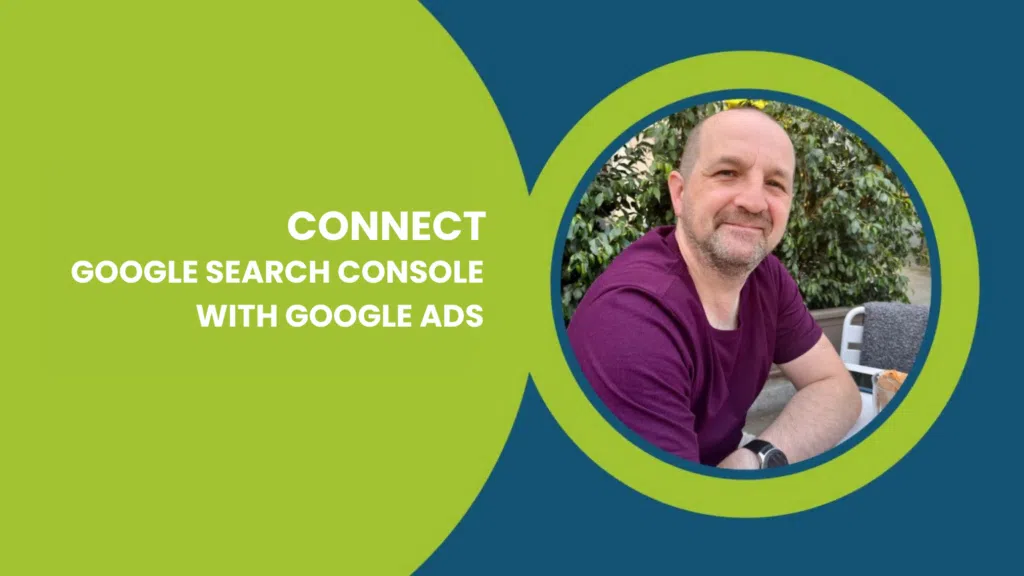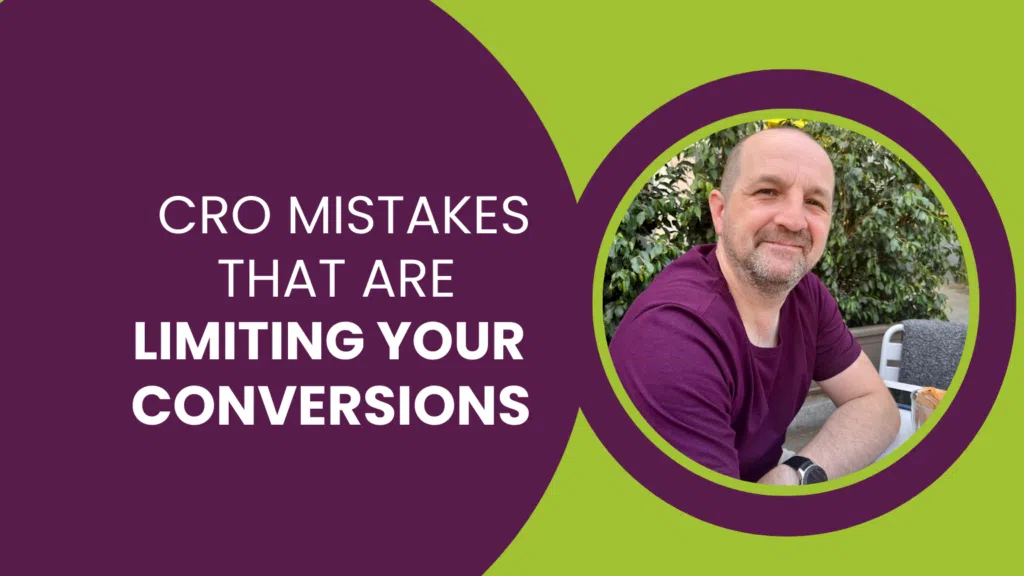One of the most important practices in SEO is internal link building. Done right, it can bolster your position in the search engine results, also known as the SERPs, and generate more organic traffic to your pages. It will also help guide your website visitors and help to increase conversions. Internal linking is something you have complete control over as a site owner, but why is it so important and how can you implement it? Luckily for you, in her very first T-Time With Tillison appearance, our specialist Emily Walton walks us through how you can do internal link-building for SEO.
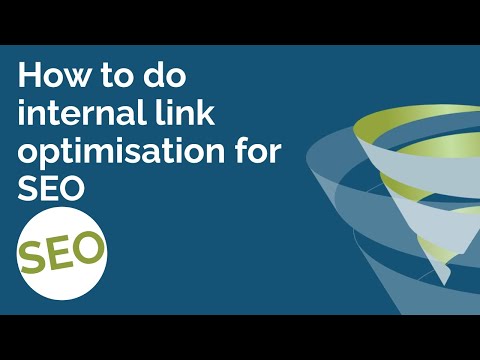
What are internal links in SEO?
In order to understand the concept of internal link-building optimisation for SEO, we need to get the basic underpinning right – what is an internal link?
(1:55) In its simplest form, an internal link is a link from one page to another on the same website or domain. As you add more links, you can begin to build up an internal link architecture – a hierarchical structure of internal links on your website. There are several different building opportunities throughout your site. This could be on your homepage, in your navigation menu, or within your blog articles.
One of the key benefits of internal link building is that it not only helps your visitors navigate your site but also aids search engine crawlers. A page without any inbound links, an ‘orphan’, is much more difficult to find – nobody will be able to get to it from other pages on your site.
An internal link acts as an endorsement for the page you’re directing the users and crawlers towards. You are essentially highlighting its importance and boosting how it ranks in the SERPs. When you set a new piece of content live, you should go back to existing articles and relevant pages to build inbound links from those.
Making internal links
Before starting to build an internal link architecture, you first need to have an optimised web page. It may be a sales page with the products or services you specialise in, a category page or perhaps a piece of cornerstone content, such as a content hub.
(4:30) This is where you can now begin to make internal links from relevant pages. The pages that you are making internal links from can be considered ‘lower level pages’. These act as the previously discussed endorsement for the optimised web page and pass ‘SEO authority’ from other areas of your site.
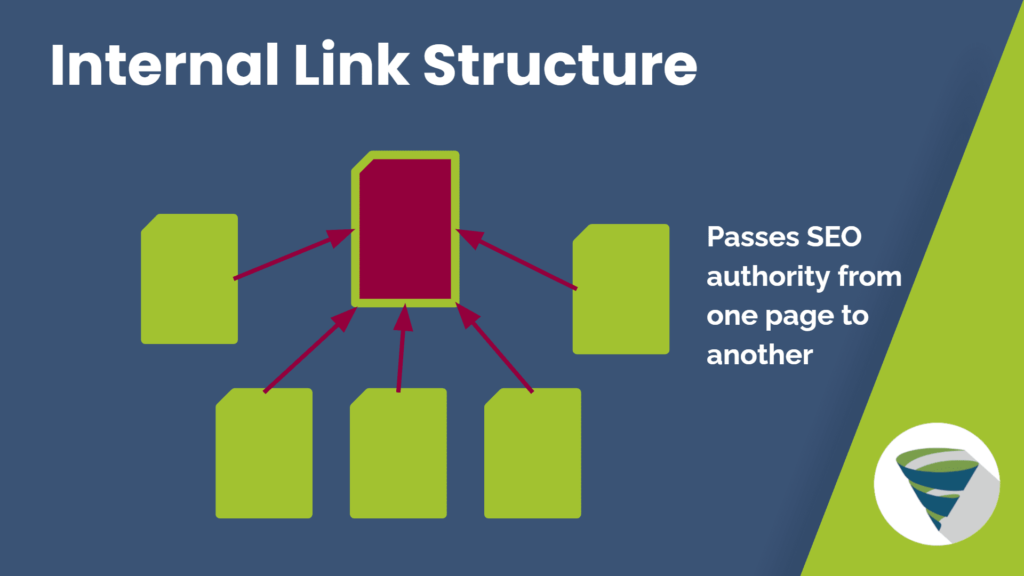
An example we can use is an optimised eCommerce web page selling pink dresses. This is where we’d then look for relevant pages on the site that we can build internal links from.
Does internal linking run the risk of ranking the wrong page?
One concern that you may have is “will the search engine rank a page that simply refers to ‘pink dresses’ as opposed to the main eCommerce one I’m trying to optimise for?” The short answer, with internal links placed in the lower level page, is no. Building links to the main pink dresses page within other content that also refers to pink dresses ensures that you avoid the wrong pages ranking instead of the main one. It acts as a signal for the search engine that, in this case, the Magento page is the one you’re trying to rank.
Internal link architecture
(7:20) An internal link architecture will be just one of multiple linking ‘clusters’. This process should be replicated sitewide for several higher-level pages. For example, a clothing brand that has sales pages for blue jeans or red sweaters in addition to pink dresses will have to look at building three internal linking ‘clusters’ to support each main page. Whilst creating each linking cluster to the appropriate main clothing page, they are also building a larger sitewide hierarchy.
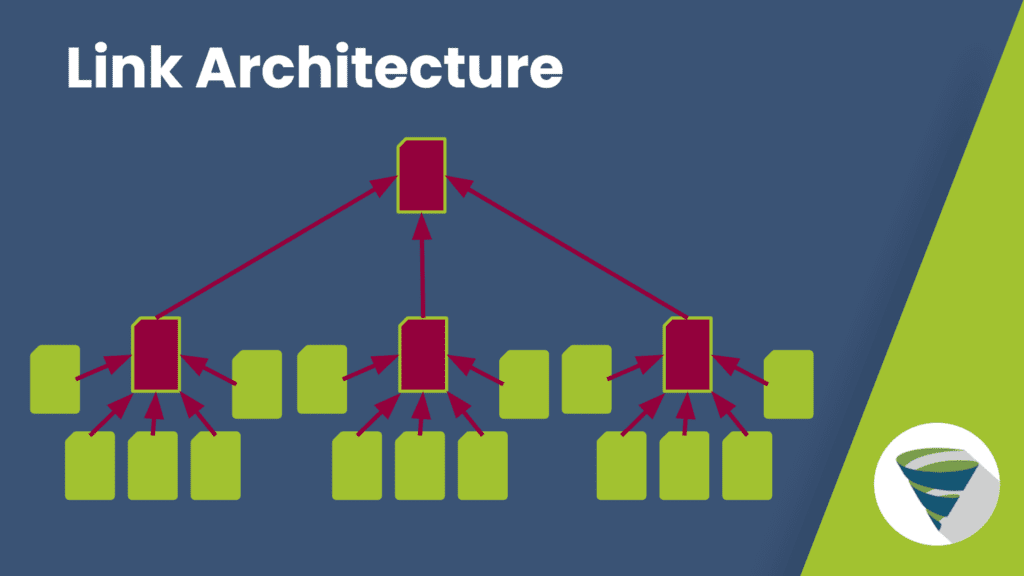
How to find internal links
(8:30) Tools like Semrush and Screaming Frog are two that are excellent for identifying pages that need internal links. They are personal favourites of our SEO management team. These tools will identify orphaned pages and pinpoint ones that direct a user or search bot towards a broken link. Other Chrome extensions such as the Mozbar will also help discover where existing links already are on a page.
Optimising an internal link
There are a number of things that need to be considered when it comes to optimising an internal link;
- Its anchor text
- The position on the page
- Number of internal links to the optimised page
- The relevance of the link to the optimised page
- Is it placed naturally?
Anchor text and position
(9:49) The specific word or phrase on a page that you attach an internal link to is referred to as ‘anchor text’. The search engines will be looking at the words that you apply links to as a ranking factor. For example, any page that is linking to a sales page for pink dresses may use the phrase ‘pink dresses’ as the anchor text. However, don’t feel limited to using the same terms over and over again. Doing a little keyword research will help you discover other anchor text variations and help you to naturally place links throughout your copy.
Something that you should look to avoid is putting the same internal link and anchor text in the header and footer navigation, which is present on every page of your website. Search engine bots will crawl all links contained within your navigations. After all, they are still internal links. However, bots will only spend a certain amount of time crawling and indexing your website – this is your ‘crawl budget’. So if you decided to simply add internal links for every sales or higher level page in your main navigation or footer , you would be essentially wasting both your time and crawl budget. A note from Google’s John Mueller is that crawlers typically give up after around 100 links anyway.
Relevancy and naturally placing internal links
(16:40) While it is sometimes not possible to place a link naturally into a sentence, it is something you have to consider when optimising your internal links. These must look natural not only to your site visitors but also the search engine crawlers – who are now clever enough to know when you’ve simply stuffed in an internal link. There is absolutely no use in looking at pages not relevant to the one you’re optimising and awkwardly stuffing the word in. Each sentence must make sense not just grammatically but also contextually, as we’ve done in the example below.

Number of internal links on a page
(19:27) Including the same link multiple times on a page comes across as spammy and will ultimately hamper user experience. Not only this, but Google only counts the first version of the same link on a page, so putting it in every single paragraph is again a waste of time and your crawl budget.
Summary
Internal linking is an essential part of SEO and a major ranking factor to help boost the position of your focus pages in the SERPs. Having internal links throughout your website is important to its structure in order to help search engine crawlers navigate the site. It also provides users with a better experience and will lead to an increase in the site’s conversion rates.
What are your thoughts on internal linking? Is it an activity you already practice religiously? Or perhaps you’re just about to start out? Let us know in the comments or tweet us @TeamTillison. Remember we offer a range of digital marketing training courses and would love to be a part of your success. So if you need help with internal linking get in touch today.
And don’t worry! Tillison Consulting are specialists in many different digital marketing sectors such as SEO, conversion rate optimisation and eCommerce CRO. We can help you transform your website and your user experience. Contact us today!


